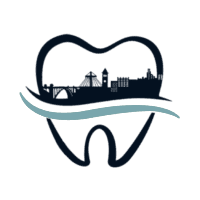Among dentists, orthodontists, in particular, tend to focus on methods and techniques aimed toward alignment, and one of the ways they do that is through a concept called anchorage. Anchorage refers to a type of resistance used to provide sustaining, gradual force to move teeth into the proper position. For some patients, orthodontists may use temporary anchorage devices to accomplish this goal. Temporary anchorage devices, also called TADS, are screw-like implants composed of titanium that are left in place for several months to ensure a proper, stable point of anchorage.
How TADS Work To Align Your Teeth
TADS helps patients with complex dental problems find ways of maintaining anchorage points for repositioning their teeth. When working with teeth with signs of malocclusion (misalignment), orthodontists must find the precise area to apply a sustaining point where pressure can be used to align the teeth. However, not everyone qualifies for traditional procedures, which use the teeth as an anchorage point. Most orthodontists would rely on external headgear to provide that needed force in these cases. Still, due to their cumbersomeness, they’ve become a less popular and less sustainable solution for this problem.
Temporary anchorage devices help solve this problem by providing an alternative anchorage point for straightening teeth. Through the use of TADS, dentists can alter the mouth and secure teeth for better anchorage, making it a better alternative to anchorages that rely on headgear. TADS, in short, are mini-implants placed into the mouth to shorten the amount of time used to accomplish the orthodontic treatment and can even be used to eliminate the need for elastics and even oral surgeries to accomplish straighter teeth.
How Does Getting TADS work?
TADS are similar to dental implants, but the procedures used to install these devices are different in their way:
- No Osseointegration Needed: TADs do not need to go through the process of osseointegration like traditional implants do. Osseointegration is when the bone connects with titanium posts that support the dental implant. Because it doesn’t need to go through this process, temporary anchorage devices are, therefore, temporary in their use.
- Removable and Pain-Free: Because TADS can be easily installed and extracted, the procedure is considered minimally invasive and pain-free as a result. The treatment site is typically numbed with local anesthesia, only resulting in mild pressure during installation.
- Overall Less Maintenance: These implants also don’t require much maintenance on the patient’s part. Patients must only use an antimicrobial solution and a small toothbrush to clean the implant twice a day, alongside brushing and flossing.
For long-term management of orthodontic care, your orthodontist can provide prescription pain relievers as a way to minimize signs of discomfort while wearing the device. Still, most people do not report signs of pain once used. Through this device, your orthodontists can better analyze the anchorage points of your mouth and gain better insight into how they can help you straighten your teeth for an overall healthier smile. For more information about this type of treatment, speak with your local orthodontist today!



